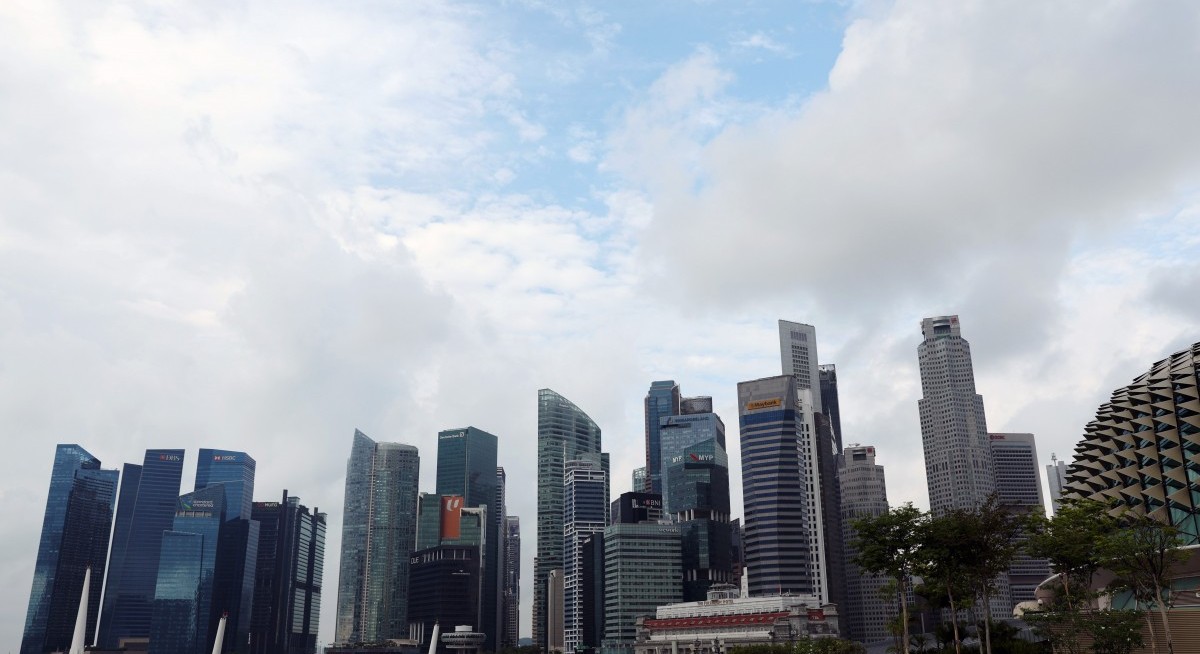Fitch Ratings analysts Tania Gold and Willie Tanoto think the banks’ ratings have sufficient headroom within their earnings and profitability assessment to absorb these negative impacts.
In an Aug 12 note, the analysts say they expect net interest margins (NIMs) to decline at a slower pace in 2HFY2025, supported by lower pressure on the Singapore Overnight Rate Average (Sora), a possible recovery in the Hong Kong Interbank Offered Rate (Hibor) and ongoing deposit repricing.
Gold and Tanoto say DBS Group Holdings’ margin remains more resilient than peers, thanks to its hedging strategies. DBS’s group NIM fell 7 basis points (bps) q-o-q and 9 bps y-o-y to 2.05% in 2QFY2025. DBS chief financial officer Chng Sok Hui told The Edge Singapore that exit NIM in June was 1.98%.
UOB’s NIM narrowed 9 bps q-o-q and 14 bps y-o-y to 1.91% in 2QFY2025, while OCBC’s NIM fell 12 bps q-o-q and 28 bps y-o-y to 1.92%.
See also: Broker's Digest: KIT, Sanli Environmental, SG REIT, CSE Global, HKL, Wee Hur, Sembcorp Industries
Meanwhile, non-performing loan (NPL) ratios held steady in 2QFY2025, say the analysts, as repayments and recoveries offset new impaired-loan formation.
See also: UOB Kay Hian initiates ‘buy’ call on Soon Hock Enterprise with target price of 68 cents
DBS saw a modest decline in its ratio, driven by higher write-offs. Significant management overlays, particularly at DBS and Oversea-Chinese Banking Corporation (OCBC), suggest that any further impairments would have little impact on profitability, say the Fitch Ratings analysts.
“We expect credit costs to normalise to around 15-25 bps of loans in 2HFY2025, with non-performing loan ratios likely to tick-up. Elevated credit costs at United Overseas Bank (UOB) in 2QFY2025 were due to a single US commercial real-estate exposure,” they add.
Moderating earnings
A modest decline in NIMs, limited loan growth and slight rise in credit costs will likely lead to marginally lower profitability in 2HFY2025, say the analysts.
“However, growth in fee income and tighter operating cost control should partially offset these pressures,” they add. “As such, operating profit relative to risk-weighted assets is likely to decline slightly, but stay well above pre Covid-19 pandemic levels.”
Meanwhile, current accounts and savings accounts (Casa) balances are recovering following the shift to term deposits during the previous rising rate environment. As a percentage of funding, this exceeds levels prior to the pandemic for UOB and OCBC, say Gold and Tanoto.
For more stories about where money flows, click here for Capital Section
UOB, in particular, reported a “particularly significant” increase in its Casa ratio, note the analysts. Casa grew 18% y-o-y to $116 billion in 1HFY2025.
The banks’ Common Equity Tier-1 (CET-1) ratios were steady in 2QFY2025, but are likely to decline over time, say Gold and Tanoto.
Loan growth of around 3% in 2025, reflecting macroeconomic uncertainty, and steady profitability should support capital, they add.
However, large capital returns to shareholders will weigh on CET-1 ratios, say the analysts. “In addition, the ratios of DBS and OCBC will fall due to the phase-in of the output floor through to 2029.”
As at 1.35pm, shares in DBS are trading 20 cents lower, or 0.39% down, at $50.55; while shares in OCBC are trading 9 cents lower, or 0.53% down, at $16.79; and shares in UOB are trading 17 cents higher, or 0.48% up, at $35.92.
Charts: Fitch Ratings
Read more about banks’ 2QFY2025 and 1HFY2025 results:
- DBS 2QFY2025 net profit rises 1% y-o-y to $2.82 billion
- DBS CEO Tan’s second report card greeted by fleeting record share price of $50
- OCBC 1HFY2025 net profit falls 6% y-o-y to $3.7 bil
- OCBC sees a more challenging 2HFY2025; analysts maintain ‘hold’ calls
- UOB reports 1HFY2025 earnings of $2.8 billion, down 3% y-o-y from higher 'pre-emptive' allowance
- UOB’s 2Q hurt by interest rates, conservative stance on wealth management and treasury income




